

Today went to El Limón Totalco, a place we have visited several times. I really love to walk there because the desert like surroundings: volcanic rocks, cactuses. An excellent habitat for snakes and scorpions, which I love to observe, and squirrels. Squirrels? Yes, read on...

So we took the bus to Perote from the central bus station in Xalapa (CAXA), and after some time we arrived in Perote. We decided to have brunch in Taquería "Taz", which is just a few meters away from the exit of the bus station in Perote. When we had enjoyed excellent Tacos al Pastor, we walked to the small bus that would take us to El Limón Totalco.

We had to wait quite some time before the bus had sufficient people to be on its way, but finally we left, and after a short trip we arrived in El Limón Totalco. We crossed the railroad tracks and entered the town. I had planned to walk this time to the west of the town in northern direction.
Shortly after we left the town I suddenly saw something crossing the track in front of us very fast. It looked furry and blurry. I tried to spot it between the cactuses, but couldn't find it back. Esme had missed it, and she also missed it the next animal that did the same trick. But this time I had a better look: a squirrel.
I normally associate squirrels with collecting nuts, and living in high trees. Several of those little mammals are living in Berros Park, close to our house. And hadn't I seen squirrels on an earlier trip to El Limón Totalco I probably wouldn't have believed my own eyes. Squirrels running around between cactuses and volcanic rocks.
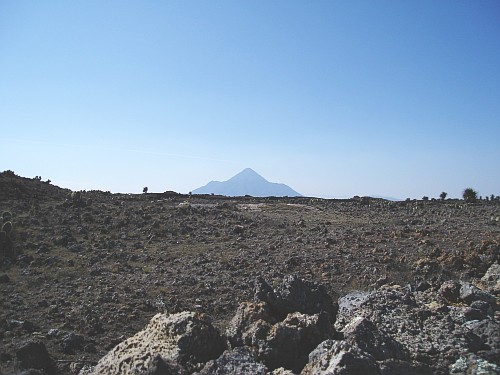
Anyway, we continued our walk, keeping the Cerro Pizarro, an isolated rhyolitic dome, in the west to our left. The landscape in that direction looked more barren, almost like a moon landscape. To our right a lot of cactuses were growing, mostly "prickly pears" belonging to the Opuntia genus. We decided to walk a bit more between those cactuses and then suddenly I saw another mammal running away, a rabbit this time.
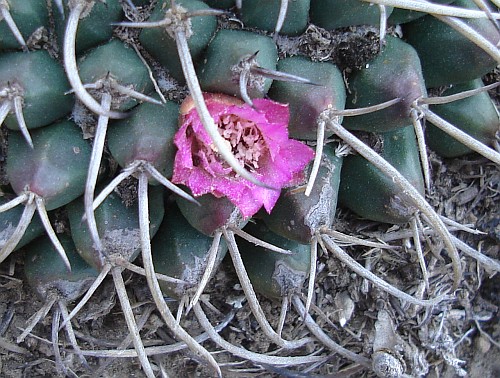
After some time we spotted a spiny lizard (Sceloporus species) that was a bit slow. I moved closer and closer, and it moved between several pieces of volcanic rock. I decided to wait a bit more, and suddenly the lizard reappeared, and I could make several pictures. The animal looked curious at the shiny thing in front of it, but otherwise was at ease.
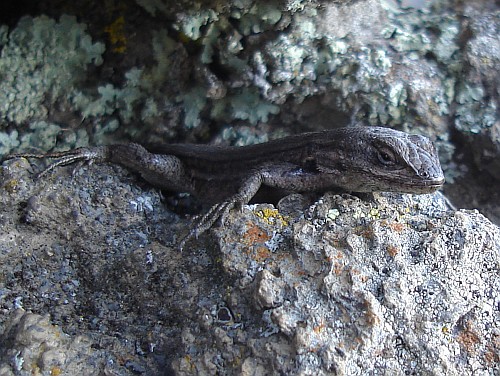
As usual I kept looking under some of the more manageable pieces of volcanic rock for snakes and scorpions. I was hoping to see a pygmy rattlesnake, but so far no such luck. Even the easier to find Conopsis lineata (Tolucan ground snake) we hadn't seen so far.
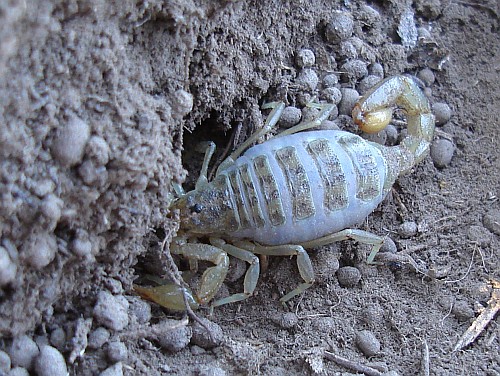
Under one stone I found a fat scorpion, and I guess she was a pregnant adult scorpion belonging to the genus Vaejovis. Over a year ago I captured a specimen belonging to the same genus, which turned out to be gravid as well.

The scorpion was not aggressive, and when I moved my hand close and pushed it a little with my other hand, it moved onto my hand. In my experience, somehow scorpions (and tarantulas) don't like to step on hands, and try to avoid them as much as possible, even if that means changing direction, or staying out in the open.
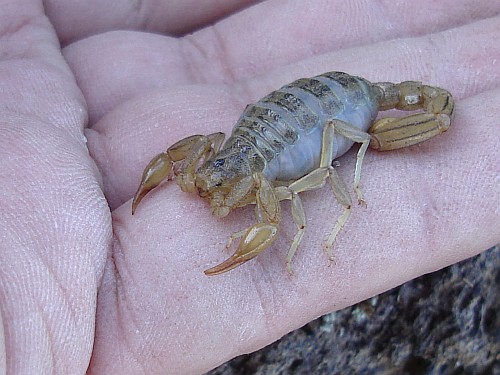
Esme and I continued our walk, and then Esme called me. She had found a shoe that clearly had been taken back by nature. It was almost impossible to distinguish it from the surroundings due to it being covered with lichen.
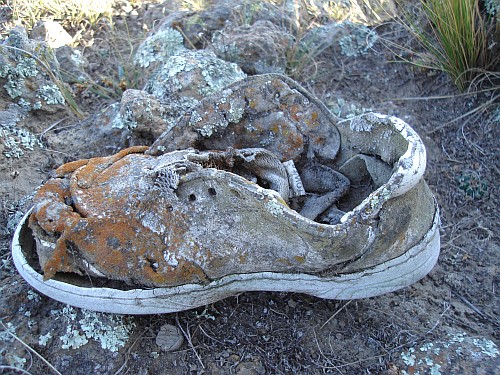
When we had a closer look at the shoe we both noticed a cactus growing inside the shoe. Later on we found several other shoes, but none were as nicely taken back by nature as this one Esme found.
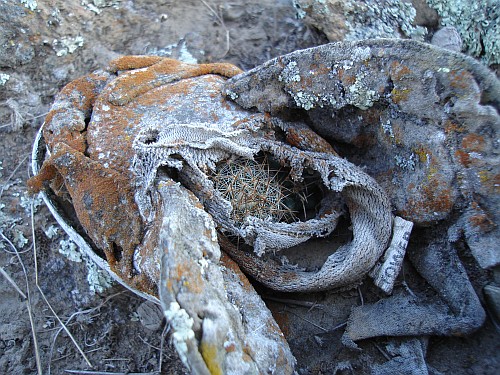
When we looked around us, Esme and I noticed a huge mountain with a snow covered top, in the far distance, just visible. Esme guessed correctly that it was El Pico De Orizaba (Citlaltépetl), which on clear days is well visible from the roof in our house in Xalapa.
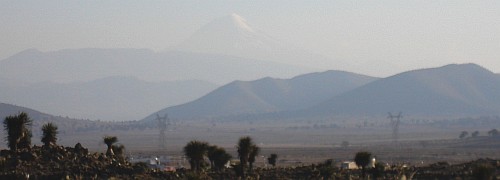
Read the final part of this blog entry in A walk in the desert 2.